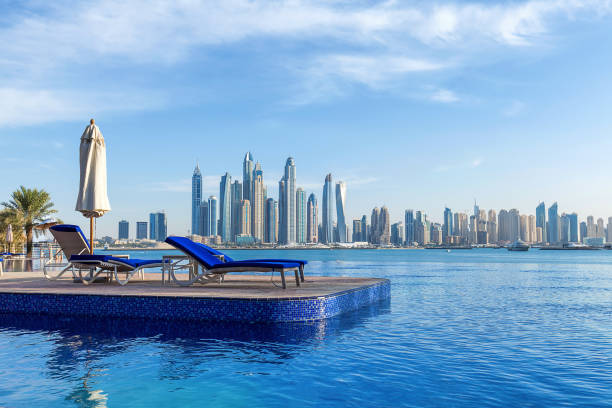Top Expensive Suits: A Journey into Elegance and Prestige
The world of high fashion is often synonymous with sophistication, luxury, and unparalleled craftsmanship. Among the many elements that define this realm, suits hold a special place. They are not just garments but statements of style, power, and prestige. In this exploration of top expensive suits, we delve into the exquisite details and rich heritage that make these pieces coveted by the elite.
The Art of Suit Making
Creating a suit is an art form that requires a meticulous blend of skill, experience, and creativity. The most expensive suits are often bespoke, meaning they are custom-made to fit the wearer perfectly. This process begins with a detailed consultation where measurements are taken, and preferences are discussed. Every aspect, from the choice of fabric to the style of buttons, is tailored to the client's desires.
Exquisite Fabrics
The foundation of any luxurious suit is the fabric. The most sought-after materials include Vicuna, a rare and incredibly soft wool from the Andes, and Cashmere, known for its warmth and silky texture. Super 150s and above denote wool that is finer and more delicate, often used in high-end suits. The fabric not only contributes to the suit's aesthetic appeal but also its comfort and durability.
Legendary Tailors and Brands
Several tailors and brands have earned a reputation for crafting some of the most expensive suits in the world. Savile Row in London is a historic street known for its bespoke tailoring houses like Anderson & Sheppard, Huntsman, and Gieves & Hawkes. These tailors have dressed royalty, celebrities, and business magnates, cementing their status in the fashion world.
In Italy, brands like Brioni and Kiton are celebrated for their luxurious suits. Brioni, founded in 1945, is renowned for its impeccable craftsmanship and was even favored by James Bond. Kiton, on the other hand, emphasizes handmade suits with each piece taking approximately 25 hours to complete. Their dedication to quality and tradition makes their suits a symbol of Italian elegance.
Modern Innovations and Trends
While traditional tailoring techniques remain at the heart of suit making, modern innovations have introduced new elements to this timeless attire. Contemporary designers often experiment with cuts, colors, and materials to create unique pieces that resonate with today's fashion-forward individuals. Slim-fit suits, unconventional fabrics like velvet and silk blends, and bold patterns are some of the trends that have emerged in recent years.
Technology has also made its way into the world of bespoke tailoring. Advanced 3D body scanning ensures precise measurements, while virtual consultations allow clients from around the world to experience the bespoke process. Despite these advancements, the essence of bespoke tailoring—a personal touch and attention to detail—remains unchanged.
Celebrity Influence
Celebrities play a significant role in popularizing and elevating the status of expensive suits. When a well-known figure is seen wearing a particular brand or style, it often leads to a surge in demand. For instance, the tuxedo worn by Leonardo DiCaprio at the Oscars or the sharp suits donned by Daniel Craig as James Bond are etched in the minds of fashion enthusiasts. These moments highlight how a well-crafted suit can enhance one's image and presence.
The Price of Prestige
The cost of the most expensive suits can be staggering, reaching tens of thousands of dollars. This price tag is justified by the craftsmanship, materials, and exclusivity associated with these pieces. A bespoke suit from Savile Row, for instance, can cost upwards of $10,000, while a Kiton suit can go beyond $20,000. These suits are often seen as investments, not just in style but in the statement they make about the wearer's taste and status.
Care and Maintenance
Owning an expensive suit comes with the responsibility of proper care and maintenance. These suits require professional dry cleaning to preserve the fabric's quality and structure. Regular brushing, airing, and careful storage are essential to maintain their pristine condition. Many high-end tailors offer aftercare services, including alterations and repairs, ensuring the suit remains in perfect shape for years to come.
Cultural Significance
Suits have a rich cultural significance and are often associated with important life events. Weddings, formal gatherings, and business meetings are occasions where a suit is the attire of choice. In many cultures, a well-tailored suit symbolizes respect, professionalism, and attention to detail. The tradition of passing down a bespoke suit through generations also underscores its value beyond mere fashion.
Sustainable Luxury
As the fashion industry moves towards sustainability, even the world of expensive suits is not untouched. Eco-friendly fabrics, ethical sourcing of materials, and sustainable production methods are being incorporated by leading tailors and brands. This shift not only appeals to environmentally conscious consumers but also sets a standard for luxury with a conscience.
The Future of Expensive Suits
The future of expensive suits lies in the balance between tradition and innovation. While the classic elements of bespoke tailoring will always have their place, the integration of new technologies and sustainable practices will shape the evolution of these garments. The essence of a suit—its ability to make the wearer feel confident and distinguished—will continue to drive its desirability.
In conclusion, the world of top expensive suits is a testament to the artistry, heritage, and innovation that define luxury fashion. From the choice of exquisite fabrics to the meticulous craftsmanship, every aspect of these suits speaks of a commitment to excellence. As fashion continues to evolve, these suits remain timeless symbols of elegance, prestige, and personal style. Whether tailored on Savile Row or crafted in the ateliers of Italy, the most expensive suits are more than just clothing; they are works of art that embody the pinnacle of sartorial splendor.
The world of high fashion is often synonymous with sophistication, luxury, and unparalleled craftsmanship. Among the many elements that define this realm, suits hold a special place. They are not just garments but statements of style, power, and prestige. In this exploration of top expensive suits, we delve into the exquisite details and rich heritage that make these pieces coveted by the elite.
The Art of Suit Making
Creating a suit is an art form that requires a meticulous blend of skill, experience, and creativity. The most expensive suits are often bespoke, meaning they are custom-made to fit the wearer perfectly. This process begins with a detailed consultation where measurements are taken, and preferences are discussed. Every aspect, from the choice of fabric to the style of buttons, is tailored to the client's desires.
Exquisite Fabrics
The foundation of any luxurious suit is the fabric. The most sought-after materials include Vicuna, a rare and incredibly soft wool from the Andes, and Cashmere, known for its warmth and silky texture. Super 150s and above denote wool that is finer and more delicate, often used in high-end suits. The fabric not only contributes to the suit's aesthetic appeal but also its comfort and durability.
Legendary Tailors and Brands
Several tailors and brands have earned a reputation for crafting some of the most expensive suits in the world. Savile Row in London is a historic street known for its bespoke tailoring houses like Anderson & Sheppard, Huntsman, and Gieves & Hawkes. These tailors have dressed royalty, celebrities, and business magnates, cementing their status in the fashion world.
In Italy, brands like Brioni and Kiton are celebrated for their luxurious suits. Brioni, founded in 1945, is renowned for its impeccable craftsmanship and was even favored by James Bond. Kiton, on the other hand, emphasizes handmade suits with each piece taking approximately 25 hours to complete. Their dedication to quality and tradition makes their suits a symbol of Italian elegance.
Modern Innovations and Trends
While traditional tailoring techniques remain at the heart of suit making, modern innovations have introduced new elements to this timeless attire. Contemporary designers often experiment with cuts, colors, and materials to create unique pieces that resonate with today's fashion-forward individuals. Slim-fit suits, unconventional fabrics like velvet and silk blends, and bold patterns are some of the trends that have emerged in recent years.
Technology has also made its way into the world of bespoke tailoring. Advanced 3D body scanning ensures precise measurements, while virtual consultations allow clients from around the world to experience the bespoke process. Despite these advancements, the essence of bespoke tailoring—a personal touch and attention to detail—remains unchanged.
Celebrity Influence
Celebrities play a significant role in popularizing and elevating the status of expensive suits. When a well-known figure is seen wearing a particular brand or style, it often leads to a surge in demand. For instance, the tuxedo worn by Leonardo DiCaprio at the Oscars or the sharp suits donned by Daniel Craig as James Bond are etched in the minds of fashion enthusiasts. These moments highlight how a well-crafted suit can enhance one's image and presence.
The Price of Prestige
The cost of the most expensive suits can be staggering, reaching tens of thousands of dollars. This price tag is justified by the craftsmanship, materials, and exclusivity associated with these pieces. A bespoke suit from Savile Row, for instance, can cost upwards of $10,000, while a Kiton suit can go beyond $20,000. These suits are often seen as investments, not just in style but in the statement they make about the wearer's taste and status.
Care and Maintenance
Owning an expensive suit comes with the responsibility of proper care and maintenance. These suits require professional dry cleaning to preserve the fabric's quality and structure. Regular brushing, airing, and careful storage are essential to maintain their pristine condition. Many high-end tailors offer aftercare services, including alterations and repairs, ensuring the suit remains in perfect shape for years to come.
Cultural Significance
Suits have a rich cultural significance and are often associated with important life events. Weddings, formal gatherings, and business meetings are occasions where a suit is the attire of choice. In many cultures, a well-tailored suit symbolizes respect, professionalism, and attention to detail. The tradition of passing down a bespoke suit through generations also underscores its value beyond mere fashion.
Sustainable Luxury
As the fashion industry moves towards sustainability, even the world of expensive suits is not untouched. Eco-friendly fabrics, ethical sourcing of materials, and sustainable production methods are being incorporated by leading tailors and brands. This shift not only appeals to environmentally conscious consumers but also sets a standard for luxury with a conscience.
The Future of Expensive Suits
The future of expensive suits lies in the balance between tradition and innovation. While the classic elements of bespoke tailoring will always have their place, the integration of new technologies and sustainable practices will shape the evolution of these garments. The essence of a suit—its ability to make the wearer feel confident and distinguished—will continue to drive its desirability.
In conclusion, the world of top expensive suits is a testament to the artistry, heritage, and innovation that define luxury fashion. From the choice of exquisite fabrics to the meticulous craftsmanship, every aspect of these suits speaks of a commitment to excellence. As fashion continues to evolve, these suits remain timeless symbols of elegance, prestige, and personal style. Whether tailored on Savile Row or crafted in the ateliers of Italy, the most expensive suits are more than just clothing; they are works of art that embody the pinnacle of sartorial splendor.
.jpg)

.jpg)
.jpg)
